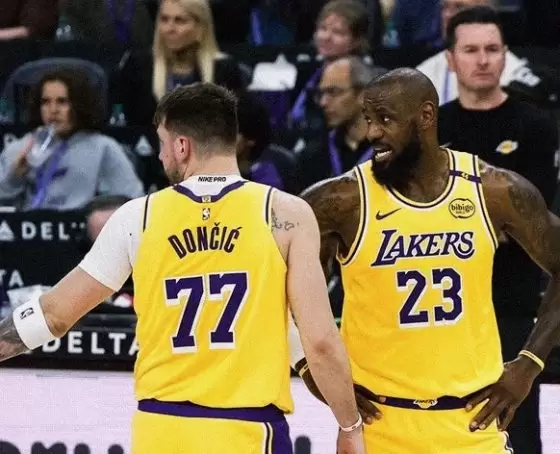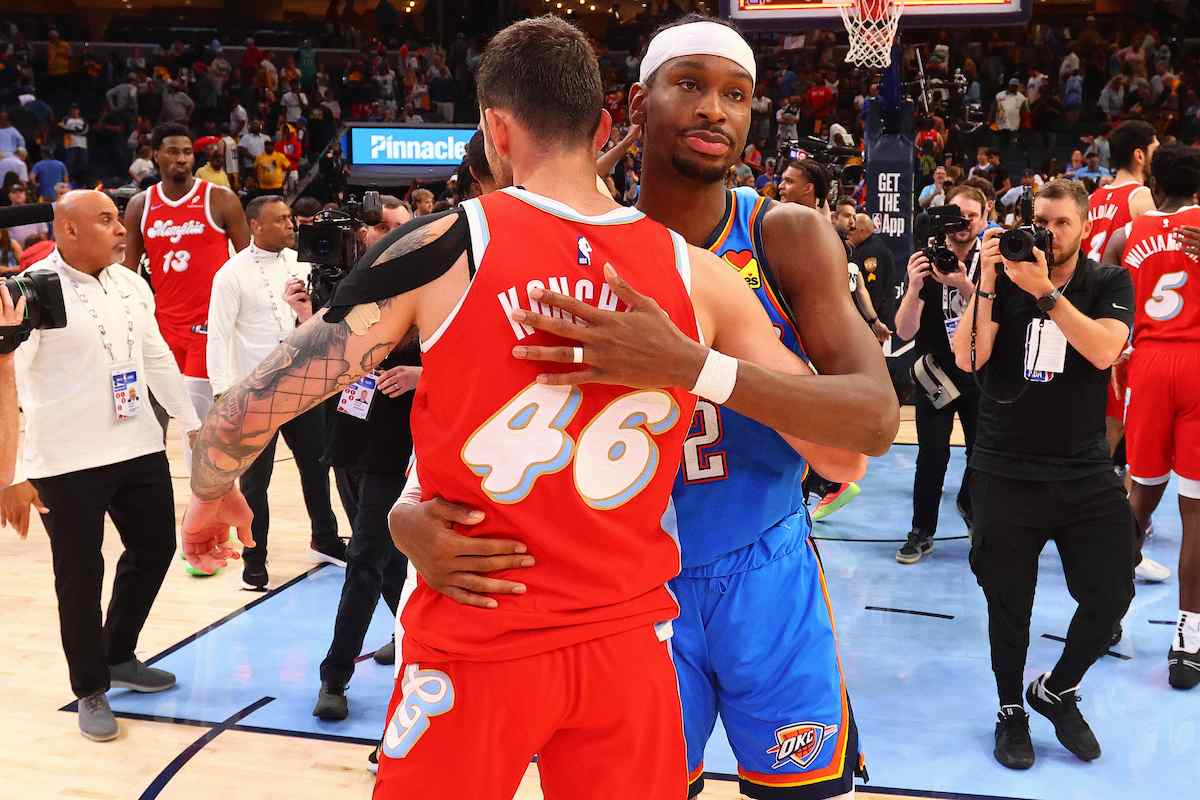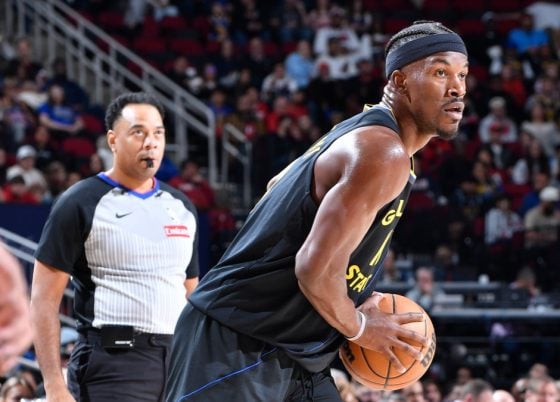One of the Dallas Mavericks most dangerous weapons is their lob pass. During their run to the NBA Finals, they consistently found ways to carve open space to fire lob passes toward the rim and get easy points on the board. Part of that is the gravity Luka Doncic and Kyrie Irving possess. Teams often send two to the ball when trying to slow down Dallas’ elite guards, especially in the pick-and-roll.
Doncic is the master of the “late lob.” A lob pass that comes deeper into the shot clock and is often disguised as a shot attempt. Again, this usually comes when there’s more than one body defending him and a big has been able to venture into the paint while building momentum.
The Boston Celtics have nullified that weapon during the opening two games of the NBA Finals. Dallas has rarely found success when throwing the ball toward the rim. Jason Kidd’s team hasn’t suddenly forgotten how to set up one of their bread-and-butter offensive actions nor has Doncic suddenly become a terrible passer.
Instead, Joe Mazzulla’s Celtics team is defending in a way that makes the Mavericks lob game obsolete, and that’s by guarding 1-on-1, and playing physical with the screening big. For Boston, their defensive system hasn’t changed. They’ve been a team that guards straight up all season. They switch. They peel switch. They play up-to-touch, at the level or in drop.
But, the Celtics rarely double. They don’t have to, not with the amount of defensive talent on their roster. Derrick White and Jrue Holiday are arguably the best defensive backcourt in the NBA. Jayson Tatum and Jaylen Brown are two of the best two-way forwards in the league. And both Al Horford and Kristaps Porzingis defend at a high level in their own ways.
“They mostly play one-on-one,” Doncic said after Game 1. “They send a lot of help. So that’s why.”
Plays like the one above show how easy it can be for Doncic to hit a late lob pass to a cutting big. If the Celtics had committed Brown to the double team in the above clip, PJ Washington would have had an easy curl to the bucket. Doncic could have sold a fadeaway jumper, and there would have been an easy lob.
Instead, the Celtics dig toward Doncic while keeping their defensive matchups intact. They are technically guarding straight up, while also helping pressure the ball. As such, Washington’s curl is picked up and well contested. The play still ends in a bucket. Yet, Washington had to worked for his position and spacing, and had to score over the defense, rather than being given space to work.
At some points in Game 2, the Celtics did start sending two to the ball and that’s where Doncic responded by finding easy lobs in transition.
“I think Luka is a special player,” Kidd said during his postgame news conference after Game 2. “He’s one of, if not the best player in the world, and he causes a problem. He’s able to find guys. Again, creating open opportunities, and we just didn’t take advantage of it.”
There have been times where Boston has been caught out. It’s impossible to be perfect. Especially when facing a top-3 talent in the world who is being back up by the greatest ball-handler in league history. Yet, more often than not, the Celtics have had Dallas’ number. When lob passes have been played, Boston’s weakside defense has been there to rotate over and either blow up the play or force a secondary action.
Brown’s rotation on the initial lob pass in this clip was wildly underrated at the time. He knew what was coming. He saw Doncic draw the double team. He saw the screener slip and get into the paint. So, Brown rotated over and used his athleticism to explode toward the rim, blowing up the lob play and forcing a secondary action. Then, he got the block on the second shot attempt.
For the most part, the Mavericks rely on Doncic’s ability to draw a double in the PnR to create their lob opportunities. It doesn’t matter whether Doncic drags out his dribble and looks to fire the lob pass from the perimeter, or if he goes for a late lob after penetrating. Sending two at the ball opens up those chances.
It’s also the same when Dallas is trying to lean into Irving’s space creation in the PnR, especially when the big man looks to roll into space and wait for the pass over the top. Once again, Boston have countered this by switching the action and guarding straight up.
Pay attention to how White deals with the switch. He stays glued to Daniel Gafford’s hips. He doesn’t allow the roll to create separation. There’s no opportunity for him to pressure the rim and offer vertical spacing. When Gafford gets into the paint, Horford scram switches with White, matching size for size around the rim. Suddenly, Irving is forced into an isolation against Brown. It doesn’t end well for Dallas on that possession.
“I mean, they are physical, yeah,” Doncic said after Game 2. “But they try to guard one-on-one. I think today they tried to help more. I was able to get some teammates open. But they are physical. They are very physical. We let them be physical. So they are pretty, pretty amazing on defense.”
One aspect of Dallas’ lob game that we are yet to see, is a double-drag action known as “Finland.” It’s a double drag screen in transition with a rip screen being set (or threatened to be set) for the first drag screener to cut toward the basket on the weakside of the floor. Dallas generated multiple good looks out of that action during their earlier playoff series.
Part of how Boston has avoided being caught with this action is by having an on-ball defender pick up Doncic or Irving higher up the floor, with the high helpline situated above the break. That makes it hard for a double drag to catch the defense slipping, because there are already three bodies on the perimeter, with the screen defenders playing up to touch.
Ignore the basket in the above play. That isn’t what the clip is being used to illustrate. Yes, Dallas finds success with the side PnR. That’s a point for a different article. What I am aiming to show with this possession is how the Celtics have two perimeter defenders positioned high up the floor with another defender across the high helpline (elbow extended region).
With the defense pushing its pick-up points so high, it’s hard for the Mavericks to flow into their “Finland” sequence, as Boston’s defense is positioned to jump toward the ball and track the cutter.
The Mavericks will undoubtedly continue searching for ways to open up their lob game. It’s a staple of their system and how they generate easy scoring opportunities in the paint. Whether they can find a way to exploit the Celtics defense will remain to be seen.
One thing is for sure, though. Boston’s lob defense isn’t due to having elite rim protection. It’s down to how they’re negating Dallas’ creation on the perimeter. That bodes well for Mazzulla’s team, as it means their process is what is impacting their shot at success, rather than being reliant on the defense of one individual.






